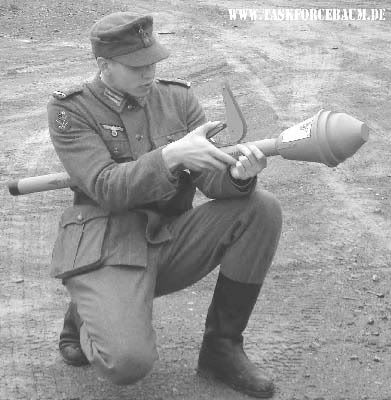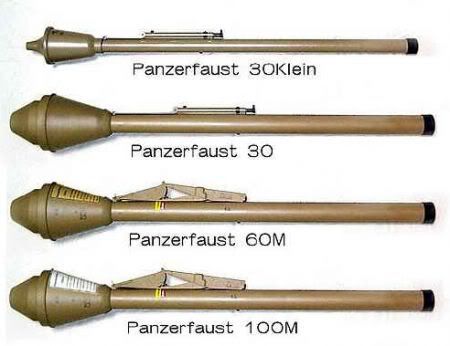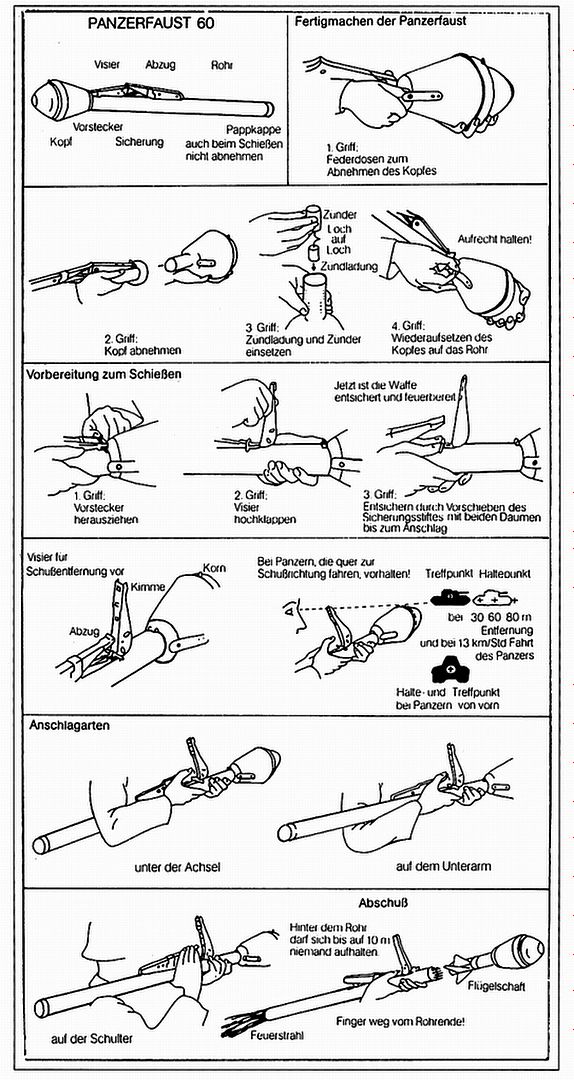Z
zaraza
Guest
The Panzerfaust (lit. "armor fist" or "tank fist", plural: Panzerfäuste) was an inexpensive, recoilless German anti-tank weapon of World War II. It consisted of a small, disposable preloaded launch tube firing a high explosive anti-tank warhead, operated by a single soldier. The Panzerfaust remained in service in various versions until the end of the war. The Panzerfaust 150 variant was the basis for the development of the Soviet RPG-2 which later evolved into the RPG-7.
In the Battle of Normandy, only 6% of British tank losses were from Panzerfaust fire, despite the close-range combat in the bocage landscape. However, the threat from the Panzerfaust forced tank forces to wait for infantry support before advancing. The portion of British tanks destroyed by Panzerfausts later rose to 34%, a rise probably explained by the lack of German anti-tank guns late in the war and also the terrain that the fighting took place in.[4]
In the urban combat in the late war in eastern Germany about 70% of tanks destroyed were hit by Panzerfausts or Panzerschrecks. (Both weapons were nicknamed "fausts" by the Soviet forces, the wielders of such weapons were consequently named "faustniks".[citation needed]) The Soviet forces responded by installing spaced armour on their tanks from early 1945 onwards, despite it being easily removed by exploding shells or Panzerfaust hits. Each tank company was also assigned a platoon of infantry to protect them from infantry-wielded anti-tank weapons.



In the Battle of Normandy, only 6% of British tank losses were from Panzerfaust fire, despite the close-range combat in the bocage landscape. However, the threat from the Panzerfaust forced tank forces to wait for infantry support before advancing. The portion of British tanks destroyed by Panzerfausts later rose to 34%, a rise probably explained by the lack of German anti-tank guns late in the war and also the terrain that the fighting took place in.[4]
In the urban combat in the late war in eastern Germany about 70% of tanks destroyed were hit by Panzerfausts or Panzerschrecks. (Both weapons were nicknamed "fausts" by the Soviet forces, the wielders of such weapons were consequently named "faustniks".[citation needed]) The Soviet forces responded by installing spaced armour on their tanks from early 1945 onwards, despite it being easily removed by exploding shells or Panzerfaust hits. Each tank company was also assigned a platoon of infantry to protect them from infantry-wielded anti-tank weapons.








































